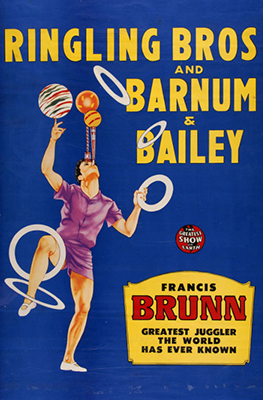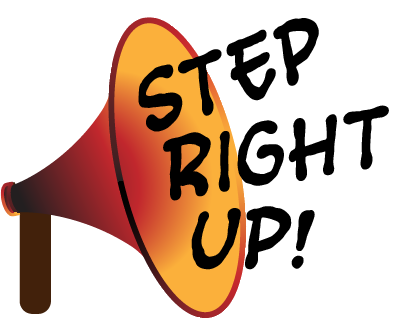 |
The way to go to the circus, however, is with someone who has seen perhaps one theatrical performance before
in his life and that in the High School hall...The scales of sophistication are struck from your eyes
and you see in the circus a gathering of men and women who are able to do things as a matter of course
which you couldn’t do if your life depended on it.
― Robert Benchley
|

|
| |
No way! What he just did isn't possible!
Classic circus acts have been around from the beginning, and aren't going away. |
|
Equestrians
Daring tricks on horseback were the heart of early circuses, and liberty acts and other horse performances have always dazzled audiences. The day of wild animal acts in circuses is ending, but horses were bred to be ridden. |
   |
 |
  |
 |
 |
|
Jugglers
Juggling requires years of patient practice, but routines become rote. Besides, audiences got harder to impress over time so jugglers had to innovate.
"Tempo" jugglers move fast, but if there are more than five or six objects it's hard to see what's happening. So juggling has been added to acrobatics, or done on a wire, a slack rope, a ball, or a ladder. Gimmicks are included like juggling sharp objects, opening an envelope in midair, or dancing while juggling.
|
    |
 Acrobats Acrobats
Every civilization has had acrobats. Pushing the body to its limits is an inherent temptation: just look at the crazy stunts people do on YouTube.
Italy has been the source of many circus acrobats and tumblers: also China and Japan, where they have a distinctive style.

|
   |
 Benders Benders
Contortionists, initially in sideshows but later in the big top, bend themselves, even dislocating their joints. Bending requires years of painful training starting in childhood, as young as two years old. The contraptions used caused slow torture.
|
 Strong men and women Strong men and women
Some people can stupefy with the spectacle of their strength. It has always been so.
|
 |
| |
|
|
| |
|
|
| |
|









 Benders
Benders







 Acrobats
Acrobats
 Strong men and women
Strong men and women